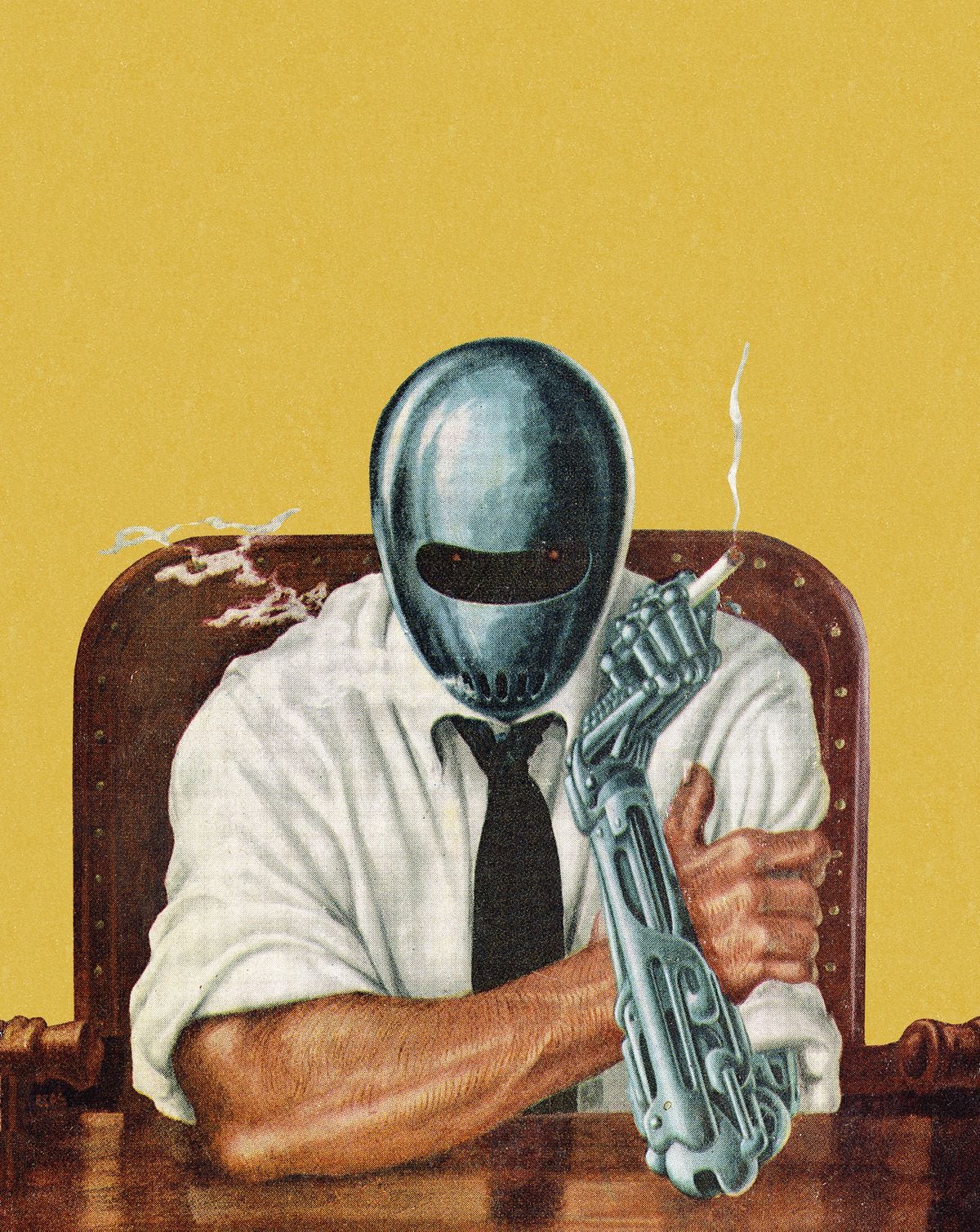Roy Schwartz is a historian and critic of pop culture. He is the author of "Is Superman Circumcised?: The Complete Jewish History of the World's Greatest Hero." He follows him on Twitter, Instagram and Facebook and at royschwartz.com. The opinions expressed here are my own. See more opinions on CNN in Spanish.
(CNN) --
"We grew up with the stories of our mother dating the real Clark Kent," Dustin Neumark, 78, a retired attorney from Highland Park, Illinois, told me. "And she looked like Lois Lane," added his brother Neil, 75, also a retired attorney.
His mother, Helen Louise Cohen, was a pretty and vivacious teenager with brown hair when she met Joe Shuster, co-creator of Superman.
He sent her love letters with illustrations, and in one of those letters it's hard to tell if her drawing is hers or Lois Lane's.
Cohen passed away in 2018, aged 96.
He left four letters and nine illustrations, which his children shared with me.
They believe others were given away or stolen in her later years, when she was suffering from dementia and people were coming in and out of his house.
Neil recalled at least one full figure drawing of Superman.
What survived are two sketches of Superman from the waist up, one in his trademark arms akimbo pose, one of Cohen or Lois (they even had a similar hairstyle), and one that is clearly of Cohen herself.
The rest are cute little things like teddy bears.
Joe Shuster's sketch of Lois Lane or Helen Cohen, dedicated to Helen Louise.
1939.
Those drawings were in the possession of the family for more than 80 years.
They are considered treasured family heirlooms, but the Cohen children told me it never occurred to them that they would be of interest to anyone.
After attending one of my Superman lectures, Dustin and Neil decided to share them publicly for the first time.
The revolutionary idea of Joe Shuster and Jerry Siegel
Helen was born on November 5, 1921 into a Jewish family in Oklahoma.
She moved to Cleveland when she was in high school.
She jokingly called herself "the Okie of Muskogee".
Helen Louise Cohen around 1939.
Shuster was born Joseph Michael Shuster in 1914, in Toronto, the son of Jewish immigrants from Europe, originally named Shusterowich.
In 1924, the family moved to the United States, settling in Glenville, a working-class neighborhood in Cleveland.
In 1934, at the age of 18, Shuster and his partner Jerome Siegel had a revolutionary idea: Superman.
He was the first superhero, a concept so unprecedented that, as Siegel detailed in his unpublished memoir, it was shunned by US newspapers because it was too fantastical for children to identify with.
Four years later, the two finally sold the idea to DC Comics, and Superman made his debut in June 1938. They sold the first story for $130 (about $2,700 in today's dollars), and as is well known , they signed the property of the character.
Helen Cohen by Joe Shuster, dedicated to Helen Louise.
1939.
Shuster drew much of Superman's physicality from Douglas Fairbanks, the action hero of the silent films.
For Clark Kent, he borrowed a bit from sitcom star Harold Lloyd, but mostly based it on himself.
In a 1983 interview in "Nemo: The Classic Comics Library #2", Shuster described himself as "kind, bespectacled, and very shy around women."
“So in the artwork, he was able to translate it,” Siegel said in the same interview.
"Not only was he drawing it, he was feeling it."
Clark Kent was her reality, while Superman was the fulfillment of her wishes.
Kent, after all, can become the most powerful man in the world any time he wants.
The smart and beautiful Lois Lane can make fun of her clumsy co-worker Kent, but she swoons over Superman, having no idea they're the same person.
The girlfriend of a co-creator of Superman
The story the children remember is that their mother met Shuster in 1938 when she was a teenager and he was in his early 20s.
How they met remains unclear.
Most likely, according to the brothers, Cohen met Shuster's father at Mount Sinai Hospital, where she volunteered and he was an elevator operator, and that he offered to introduce her son to him.
It is also possible that her parents knew each other and were a bit of a matchmaker.
They could also have met somewhere on Euclid Avenue, where the Cohens ran a stamp and coin shop, still owned by the family, and Shuster rented her art studio.
Letter from Joe Shuster to Helen Cohen, November 5, 1939 (2 of 4)
Whatever the case, Shuster was infatuated enough to write her love letters while they were both still living at their parents' house.
The letters are exciting and serious, romantic, sometimes flirtatious.
His tone indicates a relationship that is still in its early stages, but has gone from casual to serious enough that Shuster knew his family and sent them regular hello.
He moved to New York sometime between June and October 1939 and wrote to her.
He started college that September, attending Western Reserve University (now Case Western Reserve) in Cleveland.
Superman sketch, by Joe Shuster, 1939.
At this point, Superman was a success.
"Superman" #1 debuted in May 1939, eventually selling 1.3 million copies per month.
A nationally distributed newspaper strip began in January 1939, and a Sunday strip was added in November, soon appearing in 230 newspapers.
In September 1939, Time magazine noted that Superman "was fast becoming America's number one youth fashion."
“I have been living, thinking, breathing SUPERMAN until he is almost a part of me!”
Shuster wrote to Helen on November 5, 1939, the day the Sunday page began.
“After all these years,” she continued on November 26, “success has finally come to us.”
Shuster was doing very well.
Accounts vary, but he and Siegel earned between $38,000 and $75,000 a year ($780,000 and $1.6 million in today's numbers), far more than Depression-era youth with secondary education they dreamed of back then.
However, Shuster did not mention any of this in his letters.
Perhaps, like Superman, who courted Lois as Clark from the very first story, he wanted to win her over for who she was, not what she could do.
The hero doesn't always get the girl
The last surviving letter, dated December 20, 1939, was particularly poignant.
“All my waking hours are filled with the thought of going back to Cleveland,” she wrote.
Helen ended the relationship regardless.
It wasn't just the distance.
As she told her children, Shuster was simply too nice for her.
Some time later she met George Neumark at a dinner for Jewish soldiers while visiting her aunt in Muskogee.
They were married in three weeks.
Letter from Joe Shuster to Helen Cohen, December 20, 1939 (2 of 3)
He was a handsome agent;
he later received the Legion of Merit and eventually became a colonel in the Army's 88th Infantry Division.
After World War II, he returned to his hometown of St. Charles, a quaint town outside of Chicago, where in 1957 he became a councilman and in 1961 mayor.
Shuster had been classified as unfit for duty due to severe nearsightedness, which was getting worse.
Drawing became difficult and he had to rely on assistants.
In 1947, he and Siegel unsuccessfully tried to win back the rights to Superman and were fired.
Shuster spent the next several years in deepening poverty while working odd jobs, until he and Siegel reached a modest settlement in 1975.
Cover of a lost letter from Joe Shuster to Helen Cohen, postmarked June 1, 1939.
Shuster was also unlucky in love.
He dated other women before and after Helen, but it never lasted.
There was a young woman named Francine, with whom they even discussed marriage, but her mother insisted that the children be raised Catholic, while her own mother forbade it, and that was that.
He also dated Joanne Carter, née Jolan Kovacs, the model he had hired to draw Lois in 1935 (the character already existed in early drafts, but it was Carter's "irrepressibility, ambition and courage" that gave him life, her daughter told The New York Times).
Eventually, however, she married Siegel in 1948.
Shuster also married, in December 1976, at the age of 62, Judith Calpini, a former chorus girl.
He lasted 11 months.
He moved west to Los Angeles and rented a small one-bedroom apartment a few blocks from the Siegels.
He died in July 1992 at the age of 78.
He was completely blind, alone and in debt, leaving behind nothing but memories of Superman.
In my opinion, the illustrations of the Neumark brothers are not particularly valuable.
Shuster drew a lot over the years, and most of those drawings sell on auction sites for a few thousand dollars.
But the story behind these particular drawings and letters gives them historical value.
They are a glimpse into the early days of Superman's existence and the private life of his co-creator.
The real-life Clark never had his Lois, but his creation continues to court her more than 80 years later.
DC is part of Warner Bros. Discovery, the parent company of CNN.









